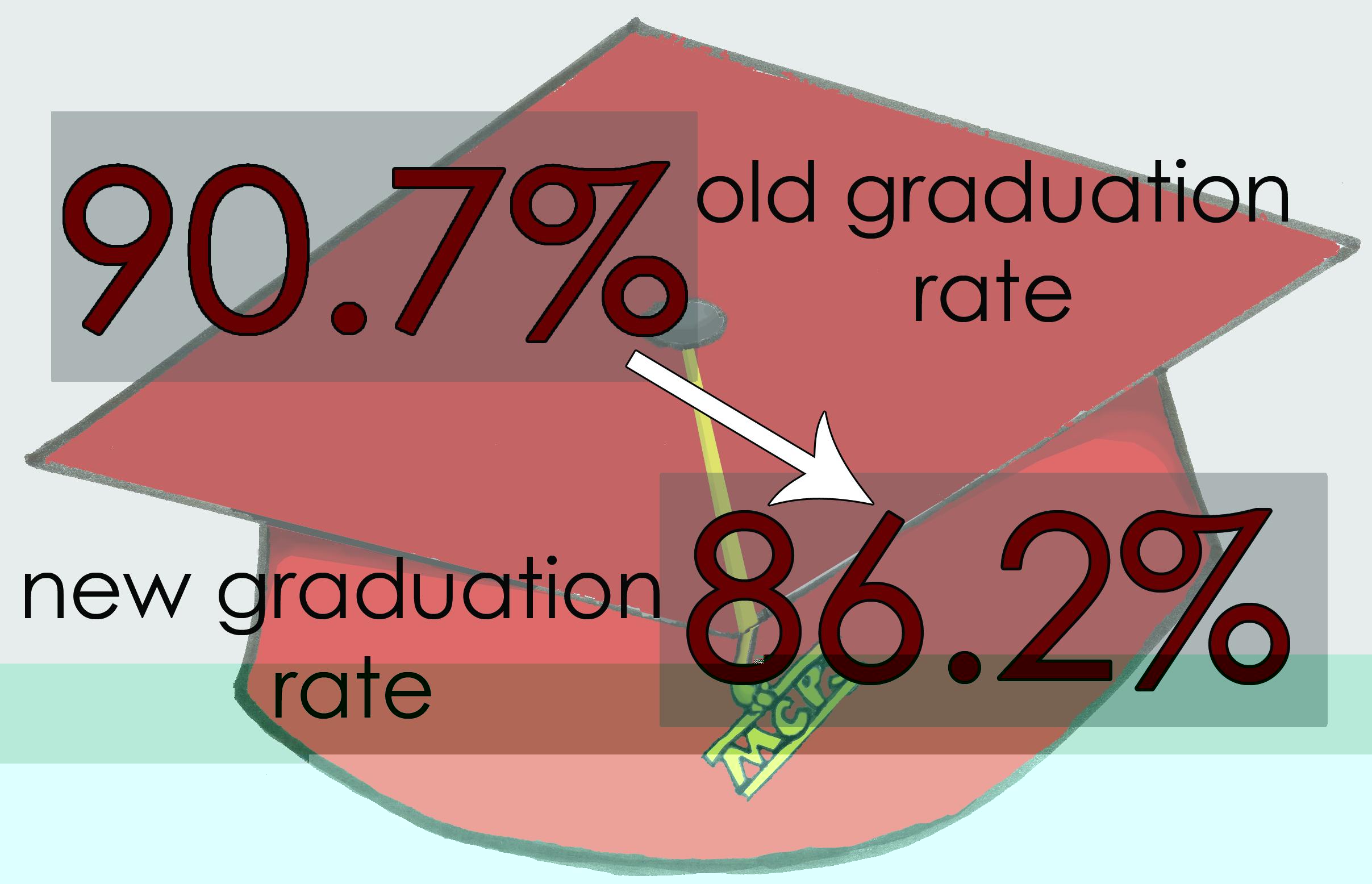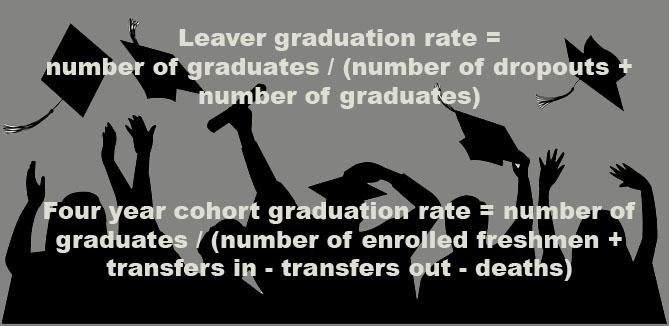Maryland BOE refines graduation rate
Federal regulations require use of new comprehensive formula
Beginning with the Class of 2011, the Maryland Board of Education (BOE) will calculate graduation rate using a new formula that will comprise all four years of high school and account for transfer students and student deaths.
According to William Reinhard, media relations director for the Maryland State Department of Education (MSDE), the formula was edited based on federal regulations enacted in 2008. The regulations require all school systems in the nation to report graduation rates using the new formula, known as the "cohort" rate, in order to fulfill federal accountability.
For the last 15 years in Maryland, graduation rate was calculated using a formula known as the leaver rate, which divides the number of graduates by the sum of the number of dropouts for the four years and number of graduates. The leaver rate accounts for students' graduation rate in senior year and does not reflect changes in the student population from freshman to junior year.
The graduation rate will now be calculated according to the adjusted-four year cohort rate, which tracks student progress through all four years of high school. The cohort rate is calculated by dividing number of graduates in senior year by the number of ninth-graders enrolled in the initial ninth-grade class. Students who transfer in, transfer out, or die during the four-year period are reflected in the final rate.
The state will also report three-year cohort rates and five-year cohort rates to calculate graduation rates for students who graduate in three years and five years, respectively. Schools systems started tracking students who were freshmen in the 2007-2008 year in order to assess graduation for the class of 2011 and beyond.According to Leslie Wilson, assistant superintendent of Maryland's Department of Education, the calculation was adopted in order to more accurately reflect the complicated graduation patterns in today's students. "The old one has predicated that a student who joins in ninth grade will graduate 4 years later, which applied to almost everyone back then," she said.
Wilson said that the cohort rate shifts the focus to each individual enrolled in the initial freshmen class. "We're a lot more mobile society than we used to be. The new system helps track our changing society," she said. "We're looking at how many students graduate on time."
According to Wilson, on average, the cohort rate is lower than the leaver rate, which may lead to declining graduation rates in upcoming years. Reinhard said that this may be a cause of worry for schools that are struggling to meet Adequate Yearly Progress (AYP), a measurement made under the No Child Left Behind act to assess how public schools and school districts in the nation are performing academically. "If a school is unable to meet the graduation target set by No Child Left Behind, it stands to miss its Adequate Yearly Progress target," he said. The four-year and five-year cohort rates will be used to determine whether schools meet AYP.
Maryland's leaver rate for the Class of 2011 was 87 percent, and their four-year cohort rate was 82 percent and five-year cohort rate was 88.9 percent, according to the 2011 Maryland Report Card.
The leaver graduation rate for MCPS for the Class of 2011 was 90.74 percent and the four-year cohort rate was 86.15 percent. According to Dana Tofig, public information director for MCPS, the leaver rate in MCPS has increased in the last two years and has remained steady since 1996. According to a MCPS press release, sixteen of 25 MCPS high schools had an increase in graduation rate, using the leaver formula, including Blair.
The MCPS Board of Education will use the graduation rate to set new goals for their own students. "The district and the Board are in the process of resetting the grad rate goals given the new calculations," said Tofig. Tofig also said that officials are looking more closely at different graduation rates within the cumulative rate in order to address lower graduation rates in different groups. "Clearly we are doing well overall. However, like nearly every district in the nation, if you break down the graduation rates by demographics and program (ESOL, FARMS, etc), there are gaps we must address."
In addition to determining a school's success in meeting AYP, Tofig said that the graduation rate calculation is essential for MCPS to gauge how well they are preparing their students. "The graduation rate is an extremely important indicator for a school — are our students graduating on time with a diploma that prepares them for life after high school?"
Blair's graduation rate for the Class of 2011 was 88.3 percent with the leaver rate and 82.6 percent with the four-year cohort rate. Counselor Marcia Johnson said that the Blair administration looks at the graduation rate in order to assess what must be changed at Blair to keep graduation rate high.
Tags: Graduation rate
Srividya Murthy. More »
Comments
No comments.
Please ensure that all comments are mature and responsible; they will go through moderation.

